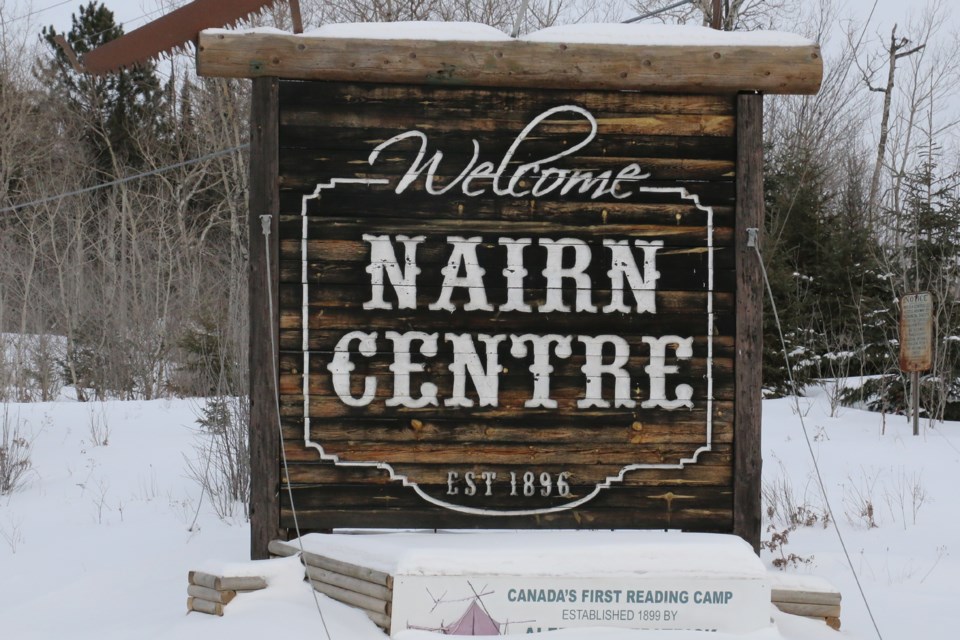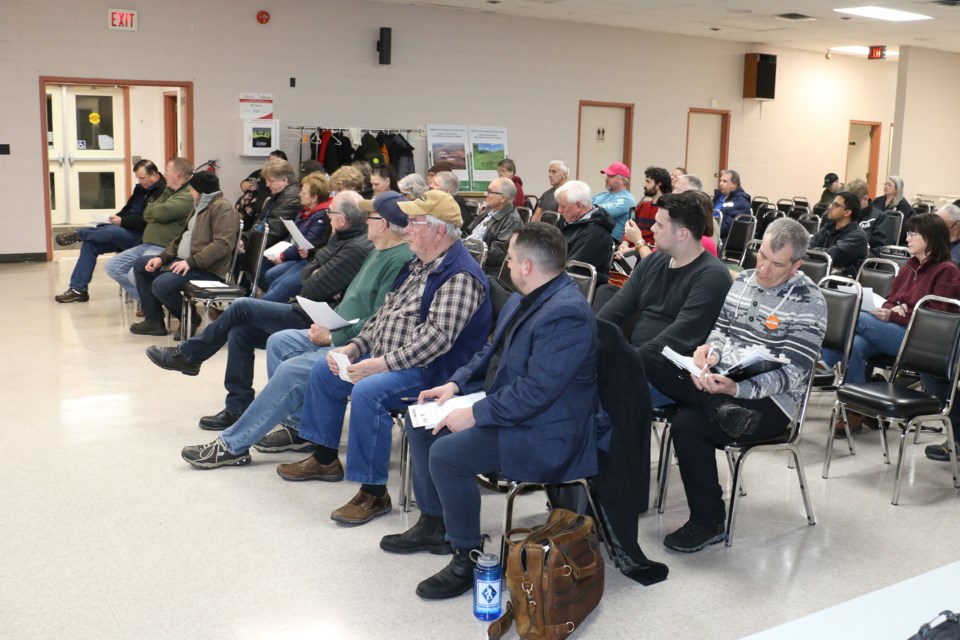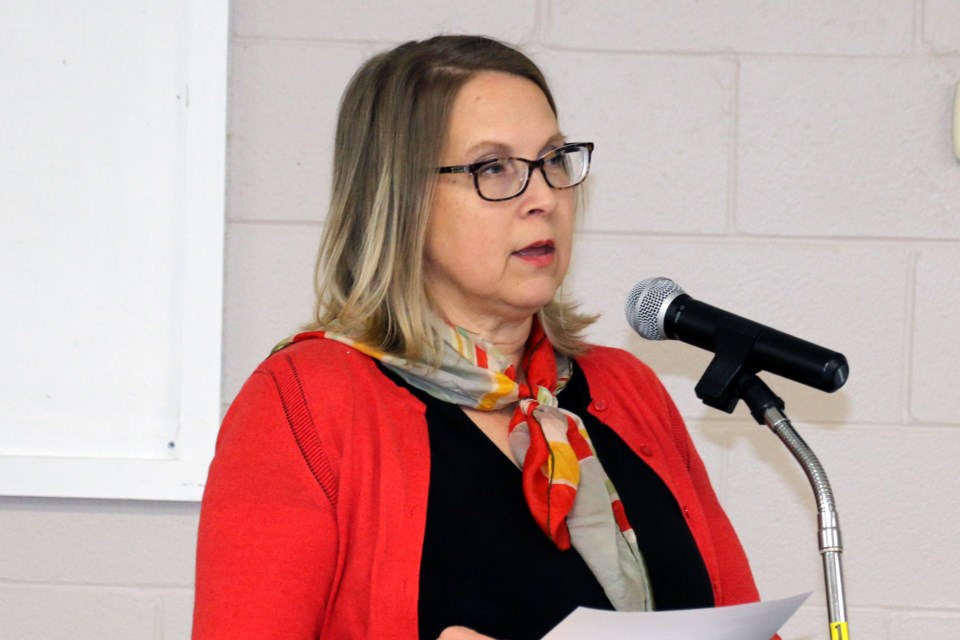Community leaders in townships west of Sudbury continue to demand answers from the higher levels of government on the plan to truck in thousands of tonnes of gravel, dirt and low-level radioactive waste to dump in a tailings management area north of Nairn Centre.
The issue was the focus of a joint town hall meeting held in Nairn Centre for the Townships of Nairn and Hyman and nearby Baldwin Township.
The audience was told how the Ontario government has a plan to transport 34,000 tonnes of material from Nipissing First Nation near North Bay, along Highway 17, to the Agnew Lake Tailings Management Area (ALTMA), located 15 to 20 kilometres north of Nairn Centre.
Some of the material is made up of old tailings from a former niobium mine that operated near Lake Nipissing in the 1950s.
The Ministry of Mines has determined that the old material would be a suitable new ground cover for the Agnew Lake site.
The key concern is that there are areas of exposed uranium tailings at Agnew Lake that might somehow affect the ground water and surface water. The old uranium tailings site there has areas where the tailings have become exposed and radiation emissions can be measured. This is due to wind and water erosion over the years; animal activity atop the old tailings and even occasional ATV and snowmobile traffic in that area.
The Ontario government plan is to cover the old uranium tailings area by trucking in the new materials; dirt and gravel.
The trucking plan and related information was first revealed to local communities in the summer of 2024 when Ontario's Ministry of Transportation unveiled a detailed scheme to haul 13,000 truckloads from Nipissing First Nation to the Nairn Centre area.
"Does the addition of these tailings to the site add to the possible contamination of ground and surface water?" asked Nairn/Hyman CAO Belinda Ketchabaw, who added that more specific information is needed.
She told the meeting that the Canadian Nuclear Safety Commission (CNSC) revealed details from a 2023 report that there were contaminants in ground water, surface water, soil and sediments surrounding the Agnew Lake site.
These included uranium, cobalt, arsenic, iron, cyanide, Radium-226 and several more heavy metals.
"The concerning part is many of these contaminants exceed both federal and provincial environmental quality standards,” said Ketchabaw.
“Uranium in groundwater and surface water, as well as arsenic and sediments, are particularly concerning to us. If these contaminants migrate towards our drinking water sources, they could pose a very significant risk to public health.
"We needed a clearer picture of the environmental stability of the site and any risk that possibly could be imposed on our drinking water.”


There was also a concern voiced that Agnew Lake sits on a higher point of land and that a fault in the bedrock might be able to carry ground water further downstream, as far south as Georgian Bay.
Ketchabaw said local townships got together and commissioned Hutchison Environmental Sciences Ltd. to study the issue and provide answers.
Three reports were done; one to examine the impact of niobium tailings being relocated to Agnew Lake; a second report to examine potential impact on local water sources; and the third report to review the oversight of the tailings area by the Canadian Nuclear Safety Commission.
She said the Hutchison reports provided significant answers to many questions, but she said government agencies did not answer all the questions.
Among the information learned was that the Ontario Ministry of Mines, the licence holder for the Agnew Lake tailings area, will indeed develop a health and safety plan for the management area, as was done for Nipissing First Nation.
Also, the Canadian Nuclear Safety Commission (CNSC) has said it would maintain open communications with the municipalities about the Agnew Lake tailings area.
A concern about future dumping of materials at the ALTMA site was answered by CNSC saying nothing more could be dumped at the tailings site without amending the licence and having a safety hearing.
Ketchabaw said a continuing concern is the lack of sufficient oversight for the Agnew Lake tailings area, by the CNSC.
"Their 2023 regulatory report does not contain enough site-specific detail to verify their claims that site conditions are satisfactory," Ketchabaw told the meeting.
"The report also fails to acknowledge the contaminant exceedences in the groundwater and surface water and sediment, as well as deteriorating condition of the site's (ground) cover and other infrastructure," she said.
Ketchabaw added there also appears to be a credibility gap with the CNSC.
"While the CNSC staff have made a statement at the Commission's regulatory meeting on January 29, 2025 that the proposed project to bring in the niobium tailings has been paused until they are satisfied that the ministry's plan is safe. Unfortunately, their track record of oversight on this site does little to ease our concerns," Ketchabaw said.
Another red flag has been raised because the Ontario ministry of mines has not yet released details of an environmental monitoring report and risk assessment. Ketchabaw said this was promised back in September.
"Not only does it undermine our confidence in how the site is being managed, it is raising concerns that we don't accurately understand the risk that this site has historically been causing," she said.
Also taking part in the meeting were municipal leaders from nearby communities; mayor Doug Gervais from Espanola and mayor Kevin Burke from Sables-Spanish River.
Gervais said he was pleased to join with other leaders to present a united front in dealing with the province and other government agencies.
"The Spanish river is part of the life and lifeblood of our communities and those who reside here," he said, and added the trucking plan requires more clarity so that citizens know what to expect.
"Espanola stands in solidarity with its neighbours on this matter, and at this time, it is critical that more information be shared with us, so that the people of our communities have a firm understanding of what might take place, the associated risks and what plans are being put in place to mitigate those risks."
Mayor Burke said the Spanish River watershed and nearby Lake Huron is home to tens of thousands of citizens as well as being the habitat for the natural world.
"No amount of increased radioactive material in the existing tailing site is acceptable to put the region at risk. The watershed is already at risk," Burke said.
"I ask that all the municipalities support us in our efforts. The project should be halted immediately," he added.
Nairn/Hyman mayor Amy Mazey told the town hall gathering she had a recent meeting with Mines Minister George Pirie that she said was warm and welcoming.
Mazey said she did not get all the answers she was hoping for, but said Pirie did promise that more information would be provided by mid-March. Mazey said while she considered that as positive news, she added that Pirie did not agree to halt the project.
Len Gillis covers the mining industry, as well as health care stories for Sudbury.com.




